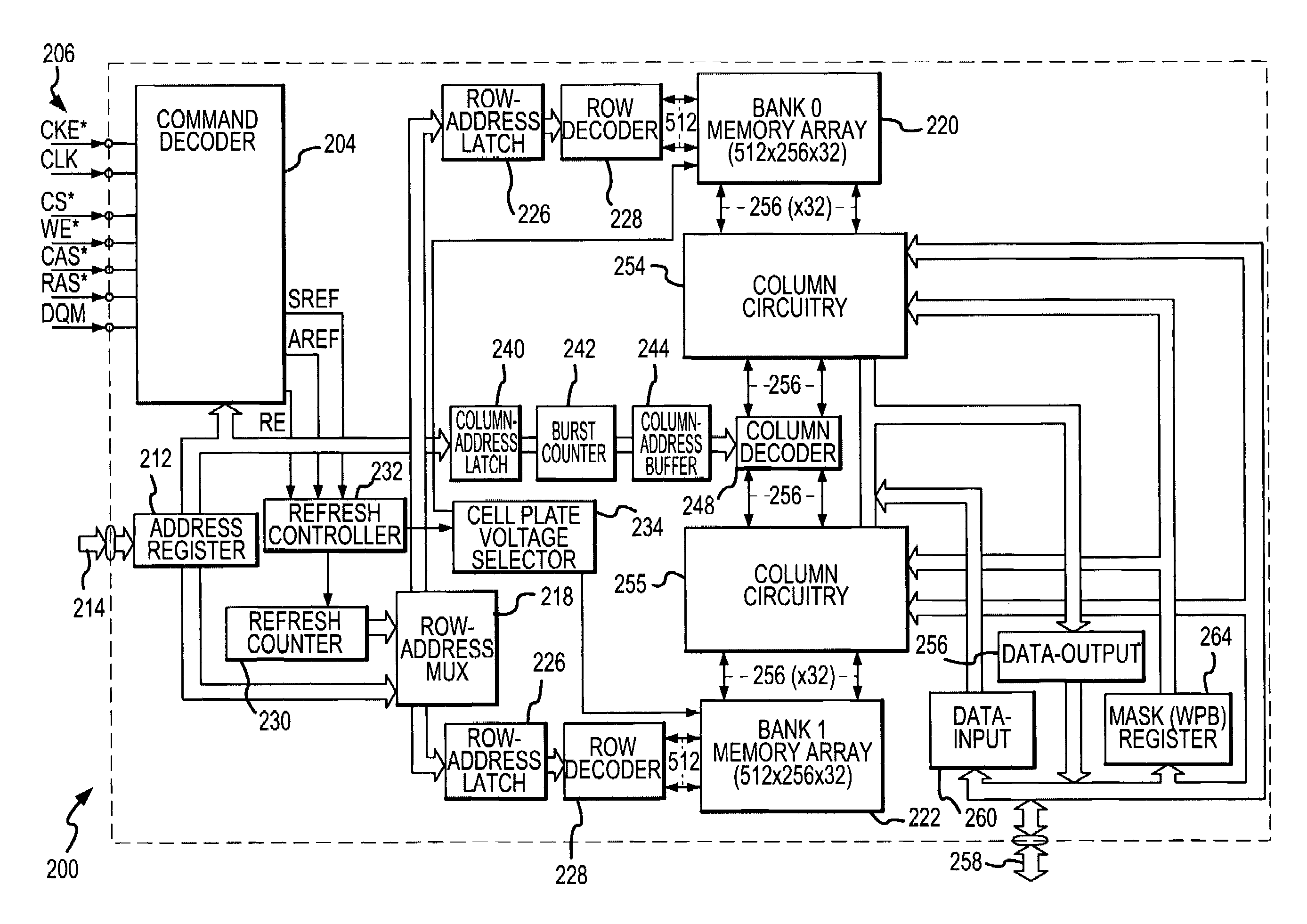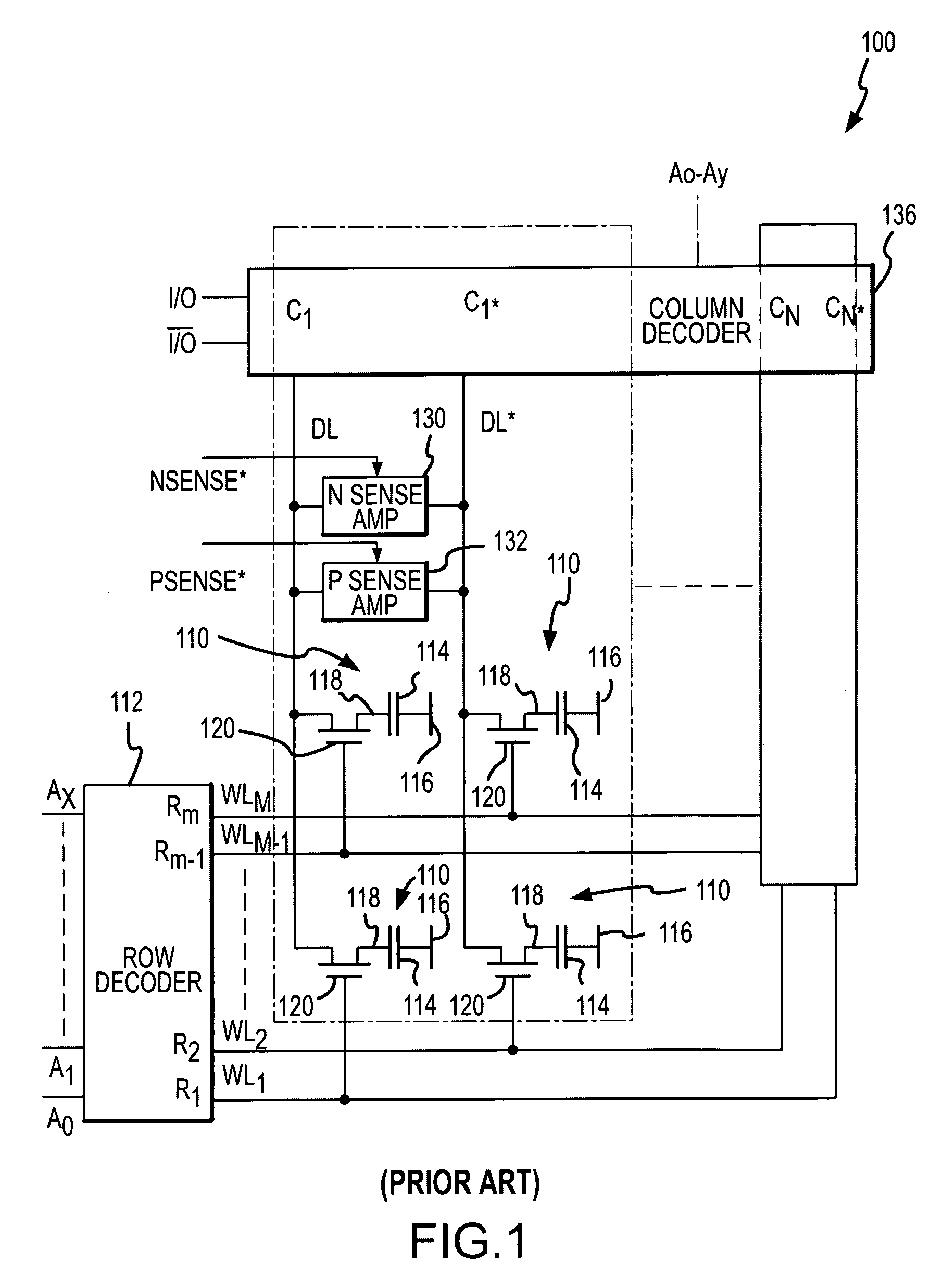System and method for reducing power consumption during extended refresh periods of dynamic random access memory devices
a dynamic random access and memory device technology, applied in static storage, information storage, digital storage, etc., can solve the problems of constant refresh of memory cells, consuming power refreshing dram memory cells at a substantial rate, so as to reduce the leakage current and reduce the refresh rate
- Summary
- Abstract
- Description
- Claims
- Application Information
AI Technical Summary
Benefits of technology
Problems solved by technology
Method used
Image
Examples
Embodiment Construction
[0022]The principal of the operation of one embodiment of the invention is exemplified by the memory cell 110 shown in FIG. 4, which contains the access transistor 120, the memory cell capacitor 114 and the diode junction 150. As shown in FIG. 4, the memory cell capacitor 114 is initially charged to VCC, which is, in this example, 2 V. As previously explained, this condition places 2.5 V across the diode junction 150 is it results in substantial leakage from the memory cell capacitor 114. According to one embodiment of the invention, when a DRAM containing the memory cell 110 shown in FIG. 4 is to operate in a self-refresh mode, the DRAM reduces the bias voltage on the cell plate 116 from VCC / 2 to a lesser voltage VCC / 2−ΔV, which, in this example, is a change in voltage from 1V to 0.5V. When the voltage on the cell plate 116 is reduced by ΔV, the voltage on the other plate 118 of the memory cell capacitor 114 is also reduced by ΔV, which, in this example, reduces the voltage to 1.5V...
PUM
 Login to View More
Login to View More Abstract
Description
Claims
Application Information
 Login to View More
Login to View More - R&D
- Intellectual Property
- Life Sciences
- Materials
- Tech Scout
- Unparalleled Data Quality
- Higher Quality Content
- 60% Fewer Hallucinations
Browse by: Latest US Patents, China's latest patents, Technical Efficacy Thesaurus, Application Domain, Technology Topic, Popular Technical Reports.
© 2025 PatSnap. All rights reserved.Legal|Privacy policy|Modern Slavery Act Transparency Statement|Sitemap|About US| Contact US: help@patsnap.com



